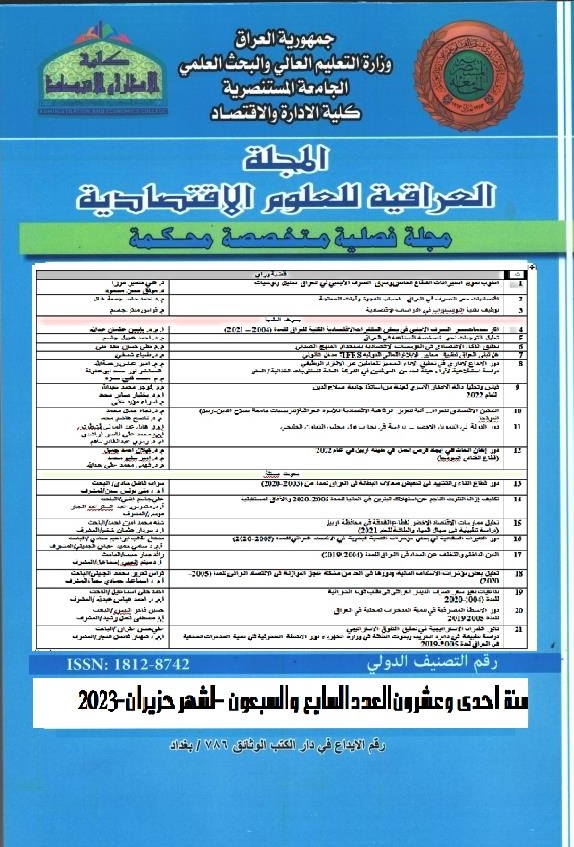Internal debt and default in Iraq for period (2004-2019)
Keywords:
Budget deficit, Internal debt, DefaultAbstract
The research aims to study the increasing internal proportion of the public debt to finance the budget deficit and default in Iraq for the period (2004-2019), and that most of the internal borrowing is funded by the Central Bank of Iraq in the secondary market due to (the ban on lending to the government in the primary market) as stipulated According to Article 26 of the Central Bank of Iraq Law No. 56 of 2004 issued by the Coalition Provisional Authority, and also because of the weakness of funding from the stock markets and the banking system, which still suffers from many differences between it and the stock markets and banks in the rest of the world, as the contribution of bank debt reached in 2019 amounted to 71% of the total internal debt, and it is noted that during most of the years of the research period, the general budget enjoyed financial surpluses, but despite this, default was the best option for the financial authority because of its dominance that leads to non-payment of debt dues to the monetary authority because of what It is going through crises and an increase in operating expenses, and this shows the imbalance in the management of public debt and its unsustainability, and thus affects the performance of the functions of the Central Bank and its independence. Numerous studies have shown that the increase in the independence of the central bank has a positive and significant impact on the decrease in domestic debt rates. The analytical method was used for the data, the results of which showed the government’s reluctance to pay its debt to the monetary authority, despite the existence of financial surpluses in the budget due to the dominance of the financial authority. on monetary power.






